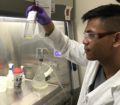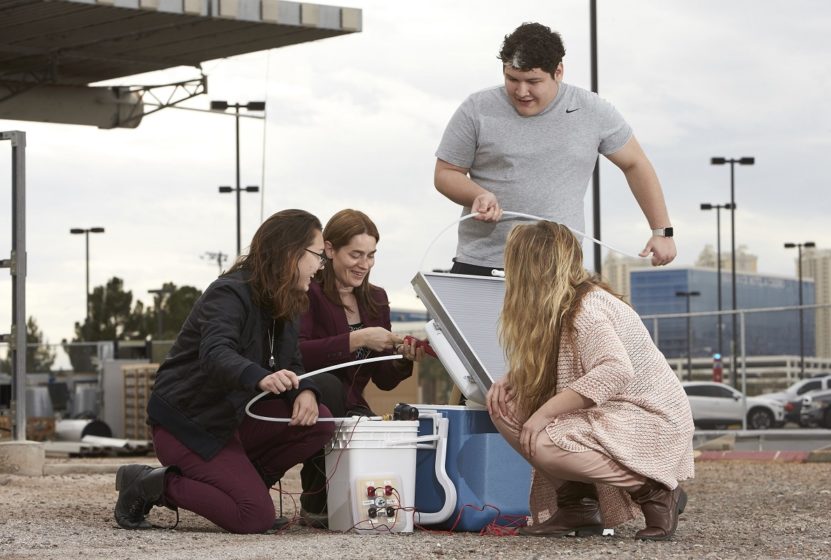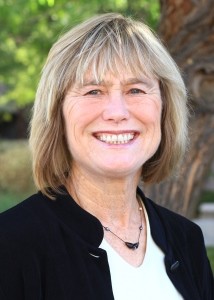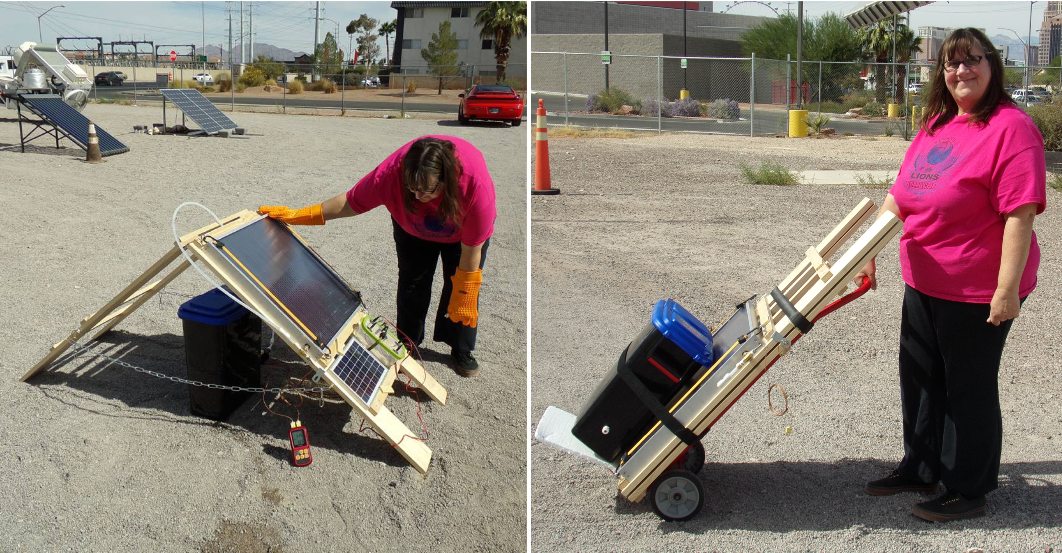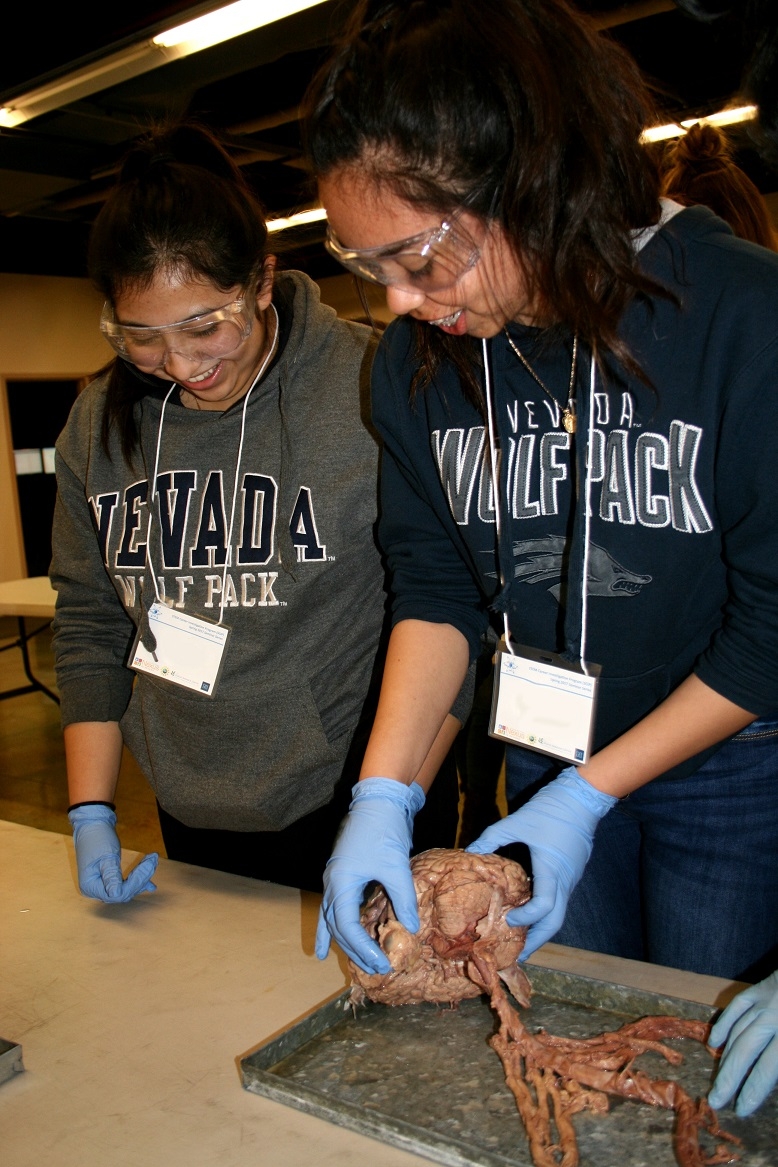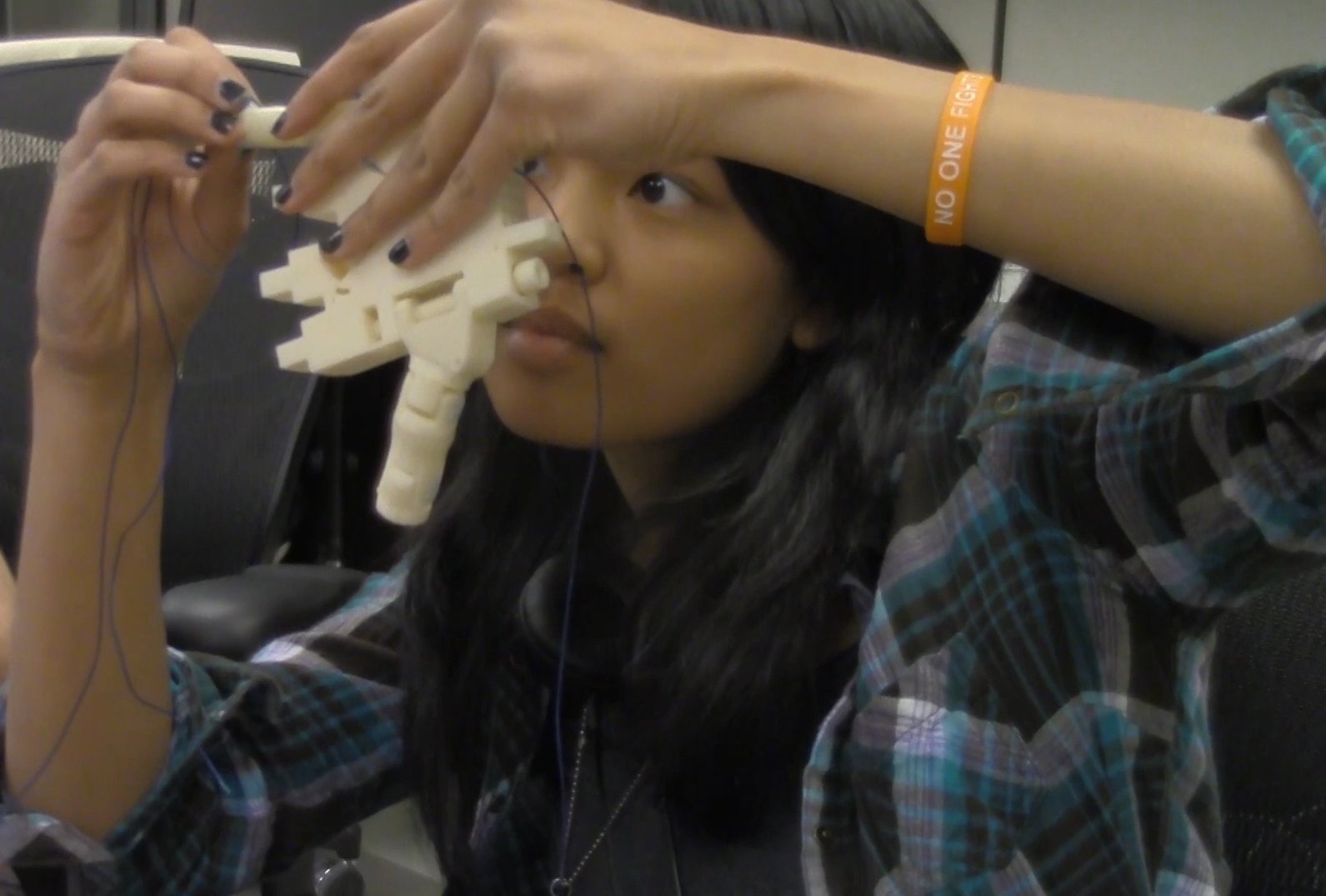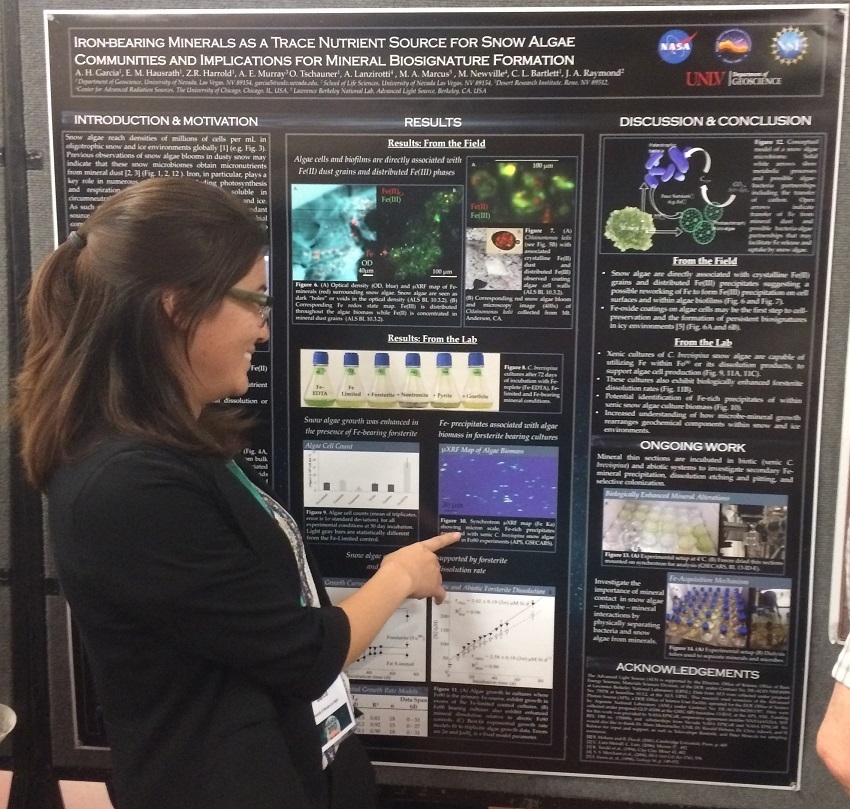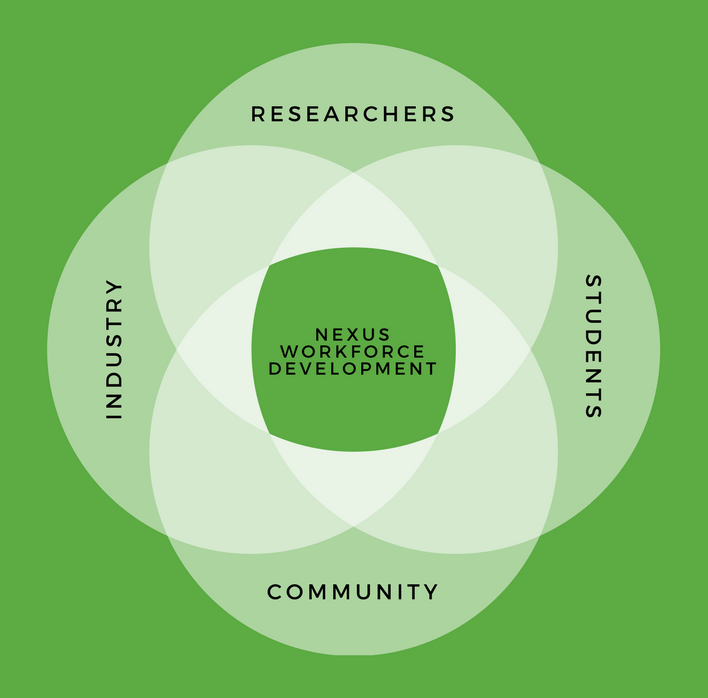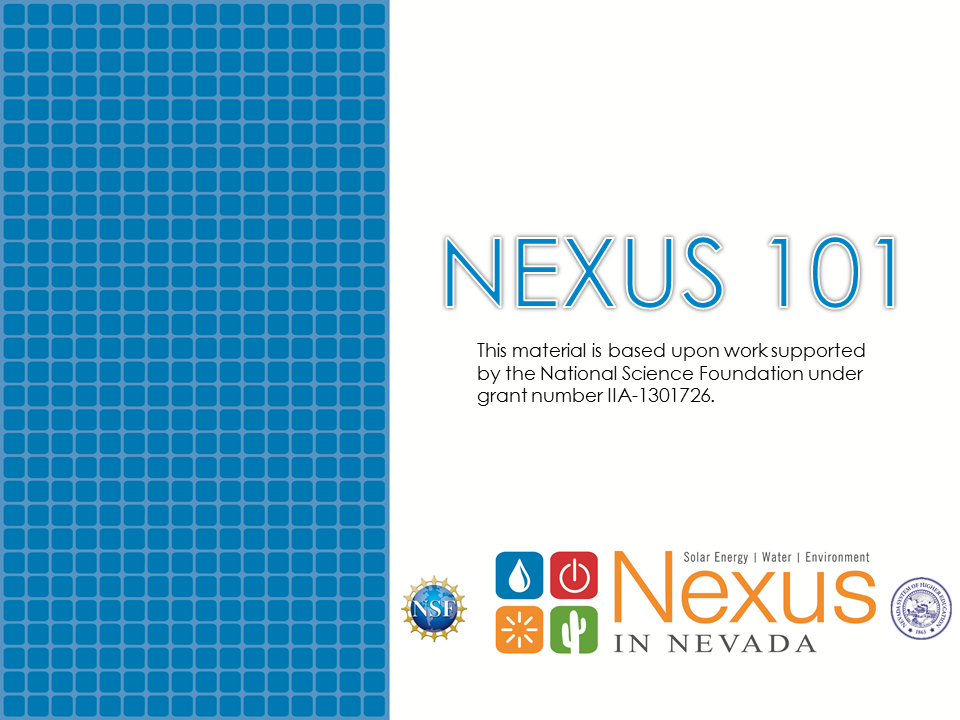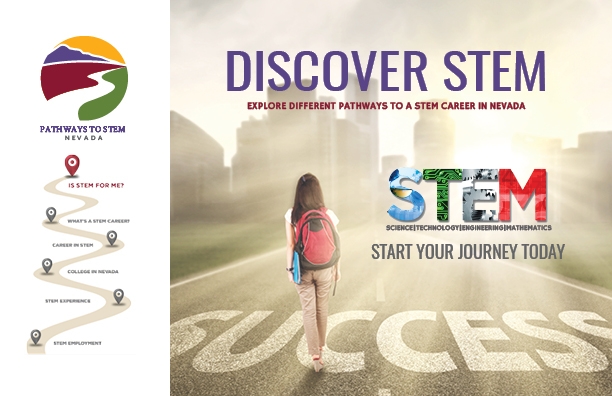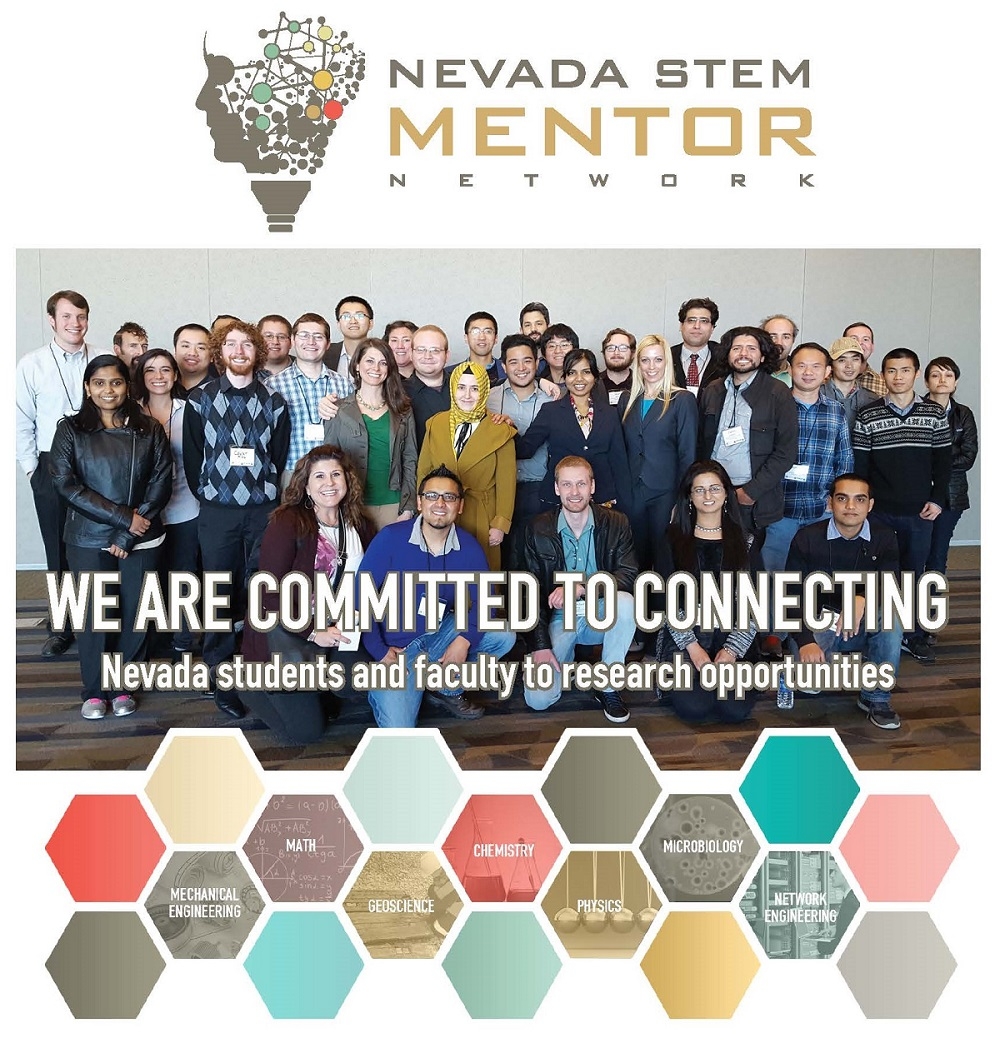Dr. Erica Marti, second from left, assembles a portable solar energy classroom kit with UNLV students Liz Heider, Francisco Chavarria and Amanda Vasquez–R. Marsh Starks, UNLV Creative Services Photo
Letter from the Director
Vibrant education programs are essential for engaging students to seek careers in science, technology, engineering, and math (STEM) fields. In designing such programs, NEXUS researchers are ensuring that Nevada’s workforce has the skills and training needed for the challenges and opportunities of tomorrow. In this issue of the NEXUS Newsletter you will read about how our NEXUS educators are developing a diverse and sustainable STEM workforce through training high school teachers how to teach their students concepts of engineering design using a “solar kit”; inspiring pre-college students to pursue STEM careers by interacting with scientists; involving the broader community in STEM through bilingual science videos produced by students; and engaging undergraduate students in STEM through research experiences with scientists.
NEXUS workforce development programs are closely aligned with the Nevada Governor’s Plan for Excellence in Economic Development by supporting the industry sectors of renewable energy and workforce diversification.
As always, we welcome future collaborations and partnerships and look forward to hearing back from you!
Sincerely,
Dr. Gayle Dana
|
WORKFORCE DEVELOPMENT HIGHLIGHTS
|
Building Capacity to Educate Students about Solar Energy
Solar kit in action and ready for transport.–E. Marti Photo
To help teachers educate their students in STEM and solar energy concepts, one NEXUS project has developed a portable solar energy classroom kit, the Sol Traveler. The kits, which were designed by NEXUS graduate student Danielle Nobles-Lookingbill, contain all the materials necessary to turn the Sun’s energy into electricity that can power a pump for solar water heating. The first step in the project is to train the teachers in the concepts of engineering design using the solar kit. Teachers then tailor the kit to meet the learning objectives they have for their students. The project reaches 150-200 students per year per teacher who is trained. For NEXUS University of Las Vegas engineer Dr. Erica Marti, who directs the project, the goal is that solar energy education becomes a component in every high school in Las Vegas and that each high school student gets to experience “real world” engineering challenges. “I would like there to be a very easy or very visible pipeline for students who want to work in solar energy, so that they know what the field entails, how to get educated and how to get a job in the community where they grew up,” Marti says.
Inspiring Students to Pursue Scientific Careers
Two SCIP’ers examine a brain with attached spinal cord.–J. Ewing-Taylor Photo
To encourage students to pursue careers in Science, Technology, Engineering and Mathematics (STEM) disciplines, it can be important to provide a glimpse into the real world life of a STEM scientist. The NEXUS STEM Career Investigation Program (SCIP) at the University of Nevada Reno (UNR) and the NEXUS Student Interactions with STEM (SISTEM) program based at the University of Las Vegas Nevada both aim to do just that. Both programs engage local students in interactive lectures and workshops given by scientists from a wide array of specialties including engineers from the Tesla Gigafactory, a forensic scientist from the Washoe County Sheriff’s Office, and university researchers. Both programs aim to catch pre-college students and inspire an early interest in STEM fields, in particular targeting children that were not previously predisposed to STEM to begin with. Ultimately the goal is to show how exciting a career in science can be. “The intention of SCIP and SISTEM is to touch students, preferably in their earlier years of high school, and to help them understand the breadth of possibilities that there are in STEM fields,” says UNR’s Dr. Jacque-Ewing Taylor, and the education Workforce Component Lead for the NEXUS project.
Introducing STEM to the Broader Community
Giselle Serate, Davidson Academy
3-D Printed Robotic Hand–Dyland Bowman Photo
Introducing students to STEM fields is important in its own right but one NEXUS program then uses this concept to inform the broader community. The Science, Technology, Engineering and Math Bilingual Online Peer Sessions (STEMBOPS) program started in 2014 with the goal of pairing pre-college and university students with STEM researchers, who act as mentors introducing the students to science and engineering in their research labs. The students then develop both English and Spanish videos, presenting the research in an approachable, easy to understand format, which can be viewed by a wide range of audiences. The ultimate goal is that they can be used not only in K-12 classrooms as a near-peer model but also used to introduce the broader community to STEM concepts. NEXUS researcher Nancy LaTourrette of the University of Nevada Reno (UNR) says the goal of the bilingual versions of the videos is to involve Hispanic communities in securing a future STEM workforce. “It is important to have students introduced to STEM research at a young age and then have them act as peers to inspire the broader community,” LaTourrette says. “I like to think that these videos can reach the ‘K-Gray’ audience – from kindergarten all the way through the community-at-large.” STEMBOP videos can be viewed at https://www.unr.edu/stembops
Engaging Undergraduate Students in STEM through Research Experiences
Angela Garcia, University of Nevada, Las Vegas presenting at AbSciCon–A. Garcia Photo
A major key to having a trained workforce in the science, technology, engineering and mathematics (STEM) disciplines lies in engaging, and keeping the interest of undergraduate students in these fields. To this end, the NEXUS project offers the Nevada Undergraduate Research Opportunity Program (UROP) to provide undergraduate students from Nevada System of Higher Education institutions scholarships to complete STEM-related research projects. Students can apply to do a 10-week summer or 9-month academic year project, working with a faculty research mentor and since 2015, the program has funded 136 students. Many of the students who have participated in UROP have since gone on to become graduate researchers, presented at national conferences and even published their own research. At least half of the UROP awards have been made to scholars whose research objectives support those of the NEXUS project. For the students, the program gives them a valuable opportunity to experience what it is like to be a scientist. “Undergraduate research is valuable in that it provides students with advanced opportunities in fields in which they are seeking a career,” says Michele Casella, director of the UROP program and the Diversity Component Lead for the NEXUS program. “These experiences can either confirm or change a students career trajectory.”
|
NEXUS AT A GLANCE
|
Take NEXUS 101 – Click Here
Pathways to STEM Nevada
Pathways to STEM Nevada addresses Nevada’s compelling need for education and workforce training for its citizens in fields related to science, technology, engineering, and mathematics (STEM). The online resource outlines the potential pathways, via state programs and institutes, to a STEM career. The focus is on increasing the number of students interested in pursuing STEM college degrees and its ultimate goal is to strengthen Nevada’s future workforce and economic development.
STEM Mentor Network
The Nevada STEM Mentor Network is a one-stop online resource that provides access to Nevada’s finest mentors and premier research projects in the STEM fields. Funded by the NEXUS project, this resource aims to foster successful research training and collaboration by offering an extensive searchable database of STEM mentors; valuable resources and tools for mentors and mentees; access to research opportunities and partnerships in STEM; and profiles of the best and brightest in Nevada STEM research.
Any opinions, findings, and conclusions or recommendations expressed in this material are those of the author(s) and do not necessarily reflect the views of the National Science Foundation.
If you would like to know more about the NEXUS project, please contact,
Dr. Gayle Dana
Gayle.Dana@dri.edu
530-414-3170


